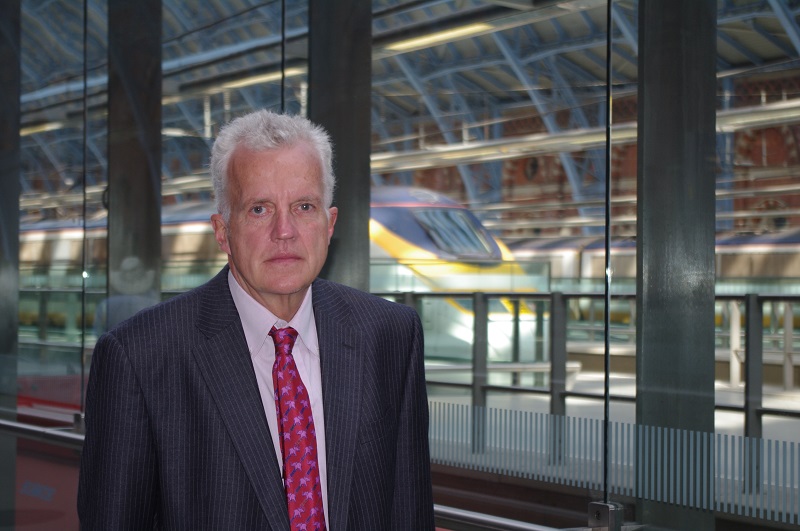The London Mayor’s Vision for Cycling could be a landmark in UK policy on cycling even though there are numerous obstacles to its implementation. The Mayor’s plan breaks with the current British tradition of trying to squeeze in cycling facilities without taking road space either from flowing traffic or parking, and simply abandoning any provision when the going gets tough at junctions
The policy too is in marked contrast with Boris Johnson’s previous efforts and is the rather surprising result from his controversial appointment of the journalist Andrew Gilligan, who campaigned strongly for Johnson in the election and who is a relatively recent convert to cycling. In his first term, Johnson’s cycling policy was focussed principally on the creation of a series of ‘Cycling Superhighways’ on main arterial routes into London and on the establishment of an automatic street-based cycle hire scheme.
The ‘Superhighways’ have been widely criticised as not living up to their name. They were originally supposed to be continuous routes into the centre of the capital but have turned out to be a rather disjointed lanes painted in Barclays Bank blue and providing little added safety to cyclists. Tragically there have been two deaths at Bow Roundabout which is the end point of one of the routes and cycling groups have been highly critical of the concept. Moreover, the Superhighways all end on the outskirts of central London which is precisely where there are most cyclists.
As for the cycle hire scheme, it has attracted large number of users – an average of 23,000 hires daily – but has proved to be expensive and despite subsidy from Barclays appears to be in need of permanent subsidy, contrary to promises made when it was created.
The Vision for Cycling is much more radical and will have a far greater impact across the capital. There are several elements to the plan, and it is clear that it is something of a first draft. No matter, it is the intent that is important. The most noteworthy idea is for a ‘Crossrail’ for cyclists, a high class cycling lane crossing London from White City to Barking including a section along the embankment. Best of all, a lane will be taken out of the Westway, the only section of the 1970s proposal for an inner ring road that was actually built and Johnson did not shirk from highlighting the irony in his announcement saying ‘the Westway, the ultimate symbol of how the urban motorway tore up our cities, will become the ultimate symbol of how we are claiming central London for the bike.’
For central Londo, there will be a ‘bike grid’, a series of high quality cycle routes that will create permeability for cyclists, something patently lacking at the moment. On less well used streets throughout the capital, there will be ‘quiet ways’, an idea that seems to reinstate the old London Cycling Network that was based on creating a series of parallel routes on safer roads. Another idea is for ‘mini Hollands’, spending a lot of money on creating first class facilities in a small area in order to encourage people simply not to use their cars for trips to the town centre or other facilities. There is, too, to be a review of the junctions strategy with the idea of making major improvements on a limited number rather than trying to bring lots of them up to standard slowly.
There is no doubting this is exciting stuff. Even cycling groups have been aghast, giving it 9/10 despite their concerns about whether it will actually be implemented. Of course the biggest stumbling block is the relationship with the boroughs. The Mayor has a certain amount of leverage in allocation transport funding and the document suggests he is prepared to use it. However, if a borough is really intent on stopping the installation of any cycling facilities on its streets, or only allows very poor ones, then it will be difficult for the mayor to push through plans.
Interestingly, at the launch of Living Streets’ Westminster branch a few days after the publication of the cycling plan, Ed Argar the cabinet member for city management, transport and environment for Westminster, a borough which has previously opposed many cycling improvement measures, said ‘I am prepared to work with the mayor to ensure his plan can be achieved’.
The very fact of the mayor’s intent is important. The inevitable doubts about the plan’s implementation and the money should not detract from the fact that this is a step change compare with any local government efforts. However, there is a long way to go. I was cycling back along Chiswick High Road in west London the other night, outside my normal territory, and continued on a contraflow bike lane for a mile or so along Hammersmith’s King Street expecting to reach Hammersmith Broadway. This was great, I thought, but then disillusion: a couple of hundred yards before the junction, however, the contraflow stopped, an arrow directed me into the road and a dreaded sign loomed out of the night sky: ‘Cyclists Dismount’. The day when they ask the same of motorists will be the day when we know that attitudes have changed.
